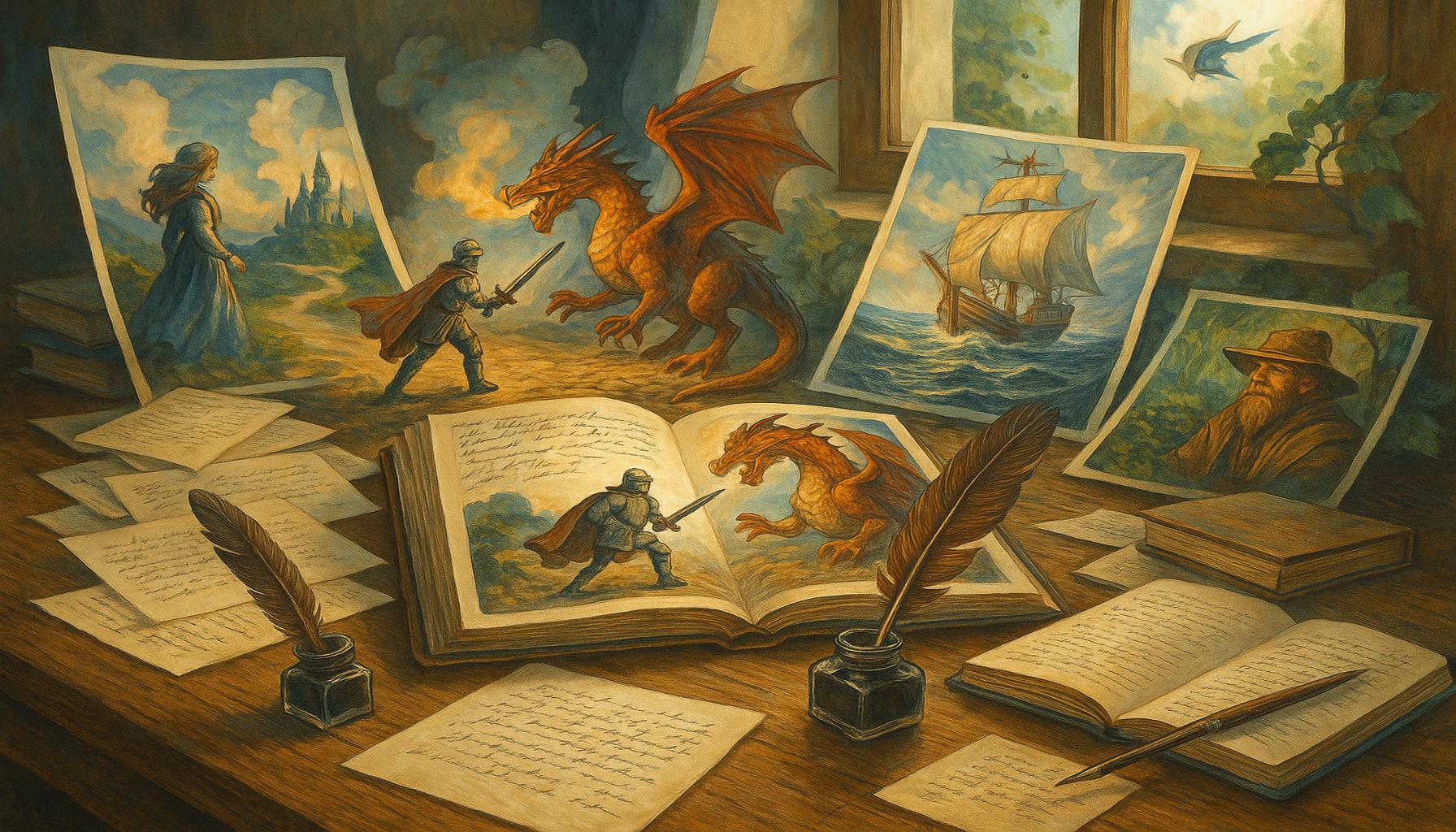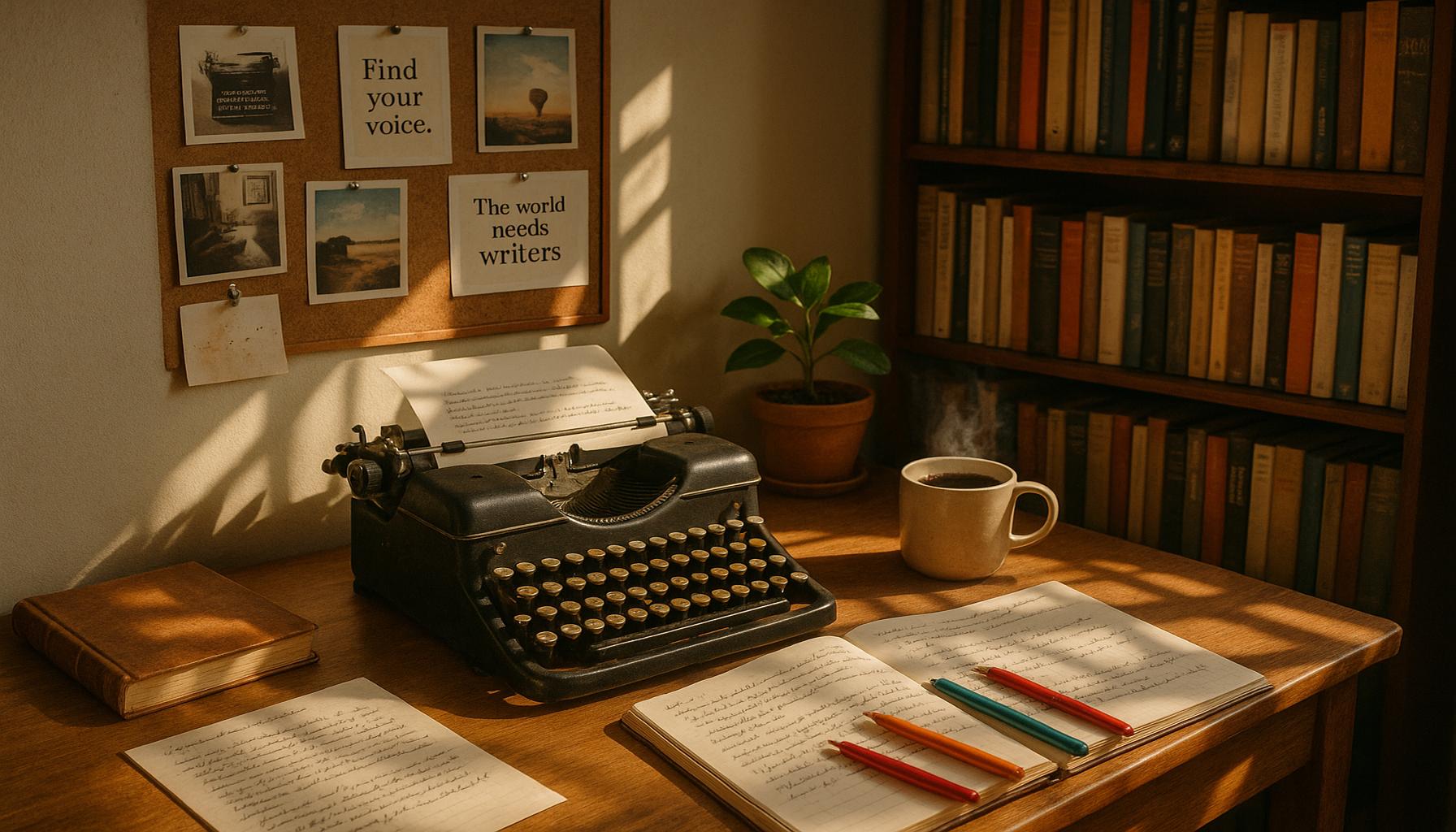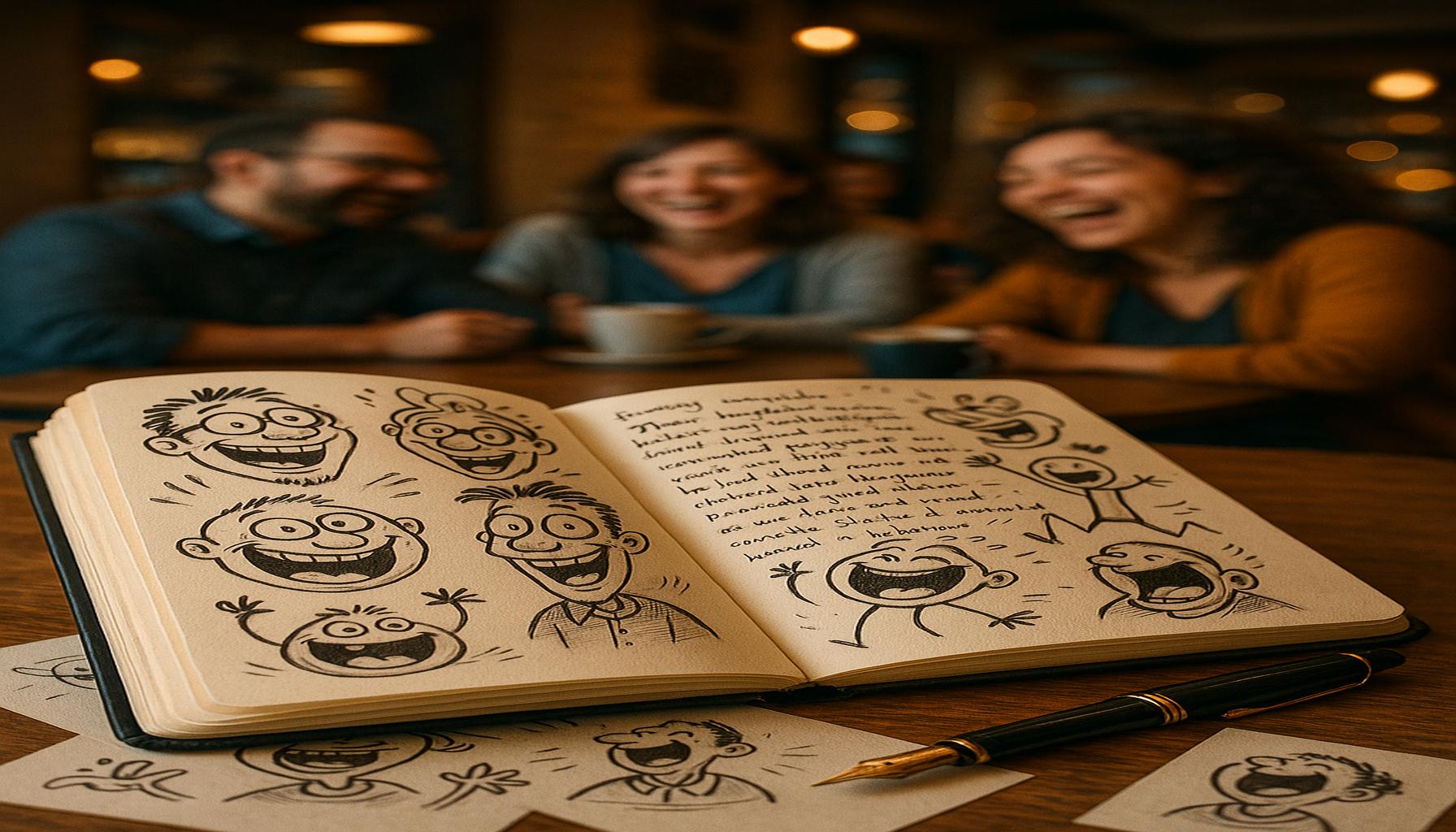Visual Narratives: The Intersection of Creative Writing and Illustration

The Unlocking of Imagination through Visual Stories
Stories have always been an integral part of human culture, enabling us to share our experiences, values, and emotions. While traditional storytelling often relies solely on words to convey emotions and narratives, the integration of visual narratives—where words meet art—creates a dynamic and immersive experience that enhances how stories resonate with audiences.
This potent combination engages the audience on multiple levels and creates a rich tapestry, blending creative writing with illustration. The synergy of these components has significant implications, particularly in how narratives are consumed and appreciated in our current cultural landscape. Here are some key aspects to consider:
- Enhanced storytelling: Illustrations serve not just as decorations but as vital elements that breathe life into characters and settings. For instance, in a classic picture book such as “Where the Wild Things Are” by Maurice Sendak, the imaginative illustrations complement the text, helping young readers visualize the fantastical world and its emotional undertones.
- Emotional resonance: The emotional power of art can amplify the feelings expressed in written words. Consider the use of dark, muted tones in illustrations accompanying a somber narrative; they can evoke sadness in a way that mere text may struggle to achieve. An example is the graphic novel “Maus” by Art Spiegelman, where stark black and white imagery highlights the gravity of the Holocaust, making the heart-wrenching story more impactful.
- Expanded creativity: The collaboration between writers and artists encourages the creation of unique ideas that transcend conventional storytelling. This partnership can lead to groundbreaking narratives. The “American Born Chinese” graphic novel by Gene Luen Yang combines diverse cultural elements with influential storytelling techniques, showcasing how varying perspectives enrich narratives.
The significance of visual narratives extends across various media, each exhibiting its unique flare:
- Children’s literature: In children’s books, combining visually engaging illustrations with carefully crafted text is paramount. Series like “The Very Hungry Caterpillar” by Eric Carle have captivated children’s imaginations through vivid colors and textured illustrations, making reading a playful, engaging experience.
- Graphic novels: Once considered mere entertainment, graphic novels like “Persepolis” have gained critical acclaim in literary circles. Their ability to weave complex, often non-linear narratives through the combination of striking imagery and potent dialogue illustrates the endless storytelling possibilities offered by visual narratives.
- Digital media: Innovations in digital media have birthed new platforms like webcomics and interactive storytelling apps, which challenge the boundaries of traditional formats. These platforms invite readers to explore narratives in unprecedented ways, merging text, sound, and visuals for an enriched experience. “Choice of the Dragon,” a text-based interactive story, invites readers to take control of the narrative, demonstrating the evolution of storytelling in the digital age.
By delving into the interplay between creative writing and illustration, we uncover how visual storytelling not only shapes perceptions and enhances understanding but also deepens the collective experience of storytelling in our increasingly visual culture.
DISCOVER MORE: Click here to uncover the therapeutic benefits of daily writing
The Power of Visual Storytelling in Diverse Genres
The fascinating amalgamation of creative writing and illustration has created a unique medium that continues to evolve across various genres. These visual narratives appeal to a broad audience, often breaking down barriers where traditional texts may be limited. By exploring how these genres incorporate imagery and text, we can better understand the far-reaching impact of visual storytelling.
One of the most notable genres where this synergy is evident is in children’s literature. Books intended for younger audiences, such as “The Snowy Day” by Ezra Jack Keats, highlight how illustrations can serve as a gateway to imagination. Readers are not only drawn into the story through captivating visuals but also engage with the characters as they navigate their worlds, learning valuable lessons along the way. The interplay of text and illustration not only entertains, but it also nurtures early literacy skills, laying a strong foundation for lifelong reading habits.
Moreover, the graphic novel genre exemplifies how illustrations complement written narratives, offering depth and complexity that traditional prose might not encapsulate as effectively. Works like “Sandman” by Neil Gaiman blur the lines between literature and visual art, drawing in readers with intricate artwork and rich narratives. These stories often explore darker themes intertwined with mythology and folklore, leveraging the visual medium to portray emotions and settings that heighten the reading experience.
Additionally, the emergence of digital media has revolutionized the landscape of storytelling. The rise of webcomics and interactive platforms allows creators to push boundaries and connect with audiences in novel ways. Platforms like Webtoon have made it possible for independent artists and writers to showcase their work to vast audiences, often telling stories in episodic formats. This not only democratizes storytelling but also opens doors for diverse voices and narratives that reflect contemporary society.
- Thematic versatility: Visual narratives can tackle a myriad of themes, from fantastical tales like “My Favorite Thing is Monsters” by Emil Ferris to real-life stories portrayed in memoir format, such as “Fun Home” by Alison Bechdel. The ability to present complex themes through visuals makes literature more accessible.
- Enhanced reader engagement: Through visuals, readers can grasp subtext and narrative layers that may not be immediately apparent in text alone. Pictorial elements invite deeper analysis and create richer interpretations, engaging readers in unique ways.
- Cultural representation: With visual narratives, creators often explore cultural identities and histories that resonate with specific audiences. Works like “Americanah” by Chimamanda Ngozi Adichie, while primarily prose, often find accompanying artwork that underscores key themes of race and identity in America.
By navigating through the diverse landscape of genres that embrace visual narratives, we begin to appreciate how illustration and writing work harmoniously to craft experiences that resonate deeply with a range of readers. Understanding this intersection illuminates not only the possibilities for storytelling but also the evolving nature of cultural narratives in a visually driven society.
| Advantages | Key Features |
|---|---|
| Enhanced Storytelling | Combines the power of text and visuals to create an immersive narrative experience. |
| Broadened Audience Appeal | Visuals attract a wider range of readers, including those who may prefer illustrations over traditional text. |
| Cultivation of Creativity | Encourages writers to think visually, leading to innovative storytelling techniques. |
| Emotional Engagement | Illustrations can evoke emotions that enhance the reader’s connection to the story. |
The fusion of creative writing and illustration in visual narratives opens up limitless possibilities for both readers and creators. The enhanced storytelling capability of this approach fundamentally transforms how narratives are constructed, allowing for a more comprehensive exploration of themes and characters through interconnected text and imagery. Moreover, broadening audience appeal is crucial in today’s diverse media landscape; illustrations entice various demographics, including those who might be more visually oriented.Furthermore, the method encourages writers to cultivate creativity, inviting them to experiment with narrative structures; this practice can introduce fresh perspectives within their storytelling. On an emotional level, the combination of compelling illustrations with engaging prose creates a profound connection that captivates readers. This intersection of art and literature is more than an aesthetic choice; it is a means of enriching the narrative experience and opening new paths for exploration in the realm of storytelling.
DIVE DEEPER: Click here to discover more insights
The Expanding Boundaries of Visual Narratives
As we delve deeper into the world of visual narratives, it becomes clear that this form of storytelling transcends traditional boundaries, fostering innovation across multiple platforms and genres. The evolution of technology has further propelled this intersection of creative writing and illustration, allowing for dynamic storytelling techniques that enhance reader interaction and engagement in unprecedented ways.
One striking example is the rise of augmented reality (AR) applications in literature. Publishers are increasingly incorporating AR features in children’s books and educational materials, transforming flat illustrations into immersive experiences. With a simple scan from a smartphone, characters come to life in 3D, enriching the narrative with interactive elements that captivate young readers. Not only does this serve to enrich the learning experience, but it also bridges the gap between digital and traditional storytelling, inviting an exploration of how audiences engage with texts in this evolving landscape.
The intersection of visual art and literature can also be seen in poetry comics, a growing genre where creators marry verse with striking visuals to convey profound emotions and concepts. Works like “The Complete Poetry Comics” by various artists showcase how this hybrid form can enhance the impact of a poem, providing a visceral interpretation that resonates with readers on multiple levels. The visual components often hold their own narrative power, making the reader consider the relationship between image and text in fresh, stimulating ways.
Furthermore, the world of manga illustrates how a distinct cultural approach to storytelling can create potent visual narratives. Japanese comics have found immense popularity in the U.S., from adventure series like “Naruto” to thought-provoking stories such as “Akira” and “Death Note.” Manga’s unique reading format, which combines dense illustrations with intricate storytelling, bridges cultural divides and introduces American readers to new narrative structures, encouraging them to explore diverse perspectives.
- Cross-disciplinary collaboration: The fusion of creative writing and illustration often brings together professionals from both fields, resulting in innovative works that push creative limits. Collaborations can span genres, from graphic memoirs to online short stories with accompanying illustrations, reinforcing the notion that visual narratives can enchant audiences regardless of traditional genre classifications.
- Interactive storytelling: Video games and interactive fiction represent another realm where visual narratives flourish. Games like “Journey” and “Life is Strange” intertwine compelling stories with stunning visuals, allowing players to experience narrative arcs in a participatory way. Here, the balance of narrative design and visual artistry becomes vital, presenting a hybrid storytelling experience that engages not just the mind but also the senses.
- Community engagement: Social media platforms offer another avenue for visual storytelling, with creators utilizing webcomics and illustrated stories to share personal experiences and societal issues. Platforms such as Instagram and Tumblr have nurtured grassroots movements, transforming everyday voices into powerful narratives through the synergy of text and illustration.
The exploration of these expanding boundaries in visual narratives emphasizes the ongoing adaptability of creative storytelling. With each new advancement, whether technological or conceptual, the collaboration between creative writing and illustration continues to redefine and reimagine the possibilities inherent in narrative construction. By embracing these innovations, we lay the groundwork for future storytellers to craft more vivid, dynamic narratives that resonate within a diverse and visually-oriented culture.
DON’T MISS OUT: Click here to discover the benefits of music on your mental health
Conclusion
In reflecting on the intricate tapestry of visual narratives, it becomes evident that the intersection of creative writing and illustration is not merely a blending of words and images but a transformative approach to storytelling that resonates deeply with contemporary audiences. This rich confluence fosters a multi-dimensional exploration of narratives, where the synergy of visual art and literary craft enhances emotional depth and connection.
As technology continues to evolve, enabling innovative formats such as augmented reality and interactive storytelling, the possibilities for engaging audiences expand exponentially. These developments invite both seasoned creators and emerging voices to traverse the boundaries of traditional narrative forms, encouraging a more immersive and personal experience. The allure of poetry comics, graphic novels, and digital platforms highlights a vibrant community eager to express complex perspectives and social issues, often in ways that challenge the status quo.
Ultimately, the future of visual narratives is one of boundless potential, as the continuous blending of disciplines leads to groundbreaking works that provoke thought, evoke feelings, and invite collaboration. As readers and creators alike dive into this evolving landscape, they find themselves at the forefront of a cultural shift, where storytelling knows no limits. Embracing this convergence not only enriches our understanding of stories but also paves the way for a more inclusive and diverse narrative ecosystem, inviting everyone to partake in the joy of visual storytelling.


